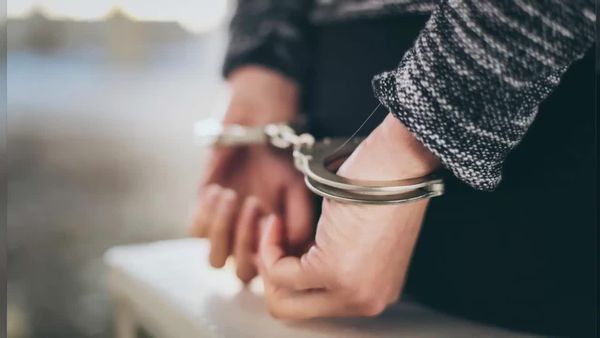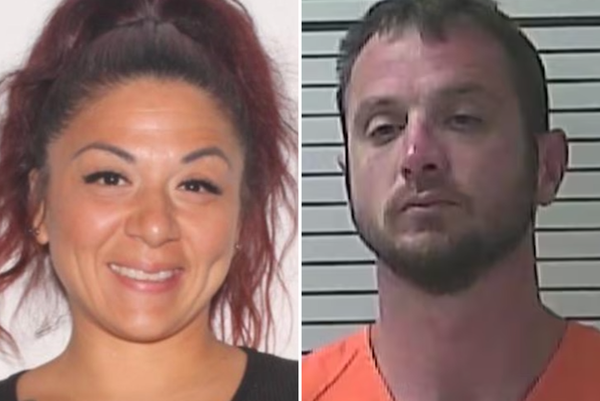
A United States jury has found Stewart Rhodes, founder of the far-right Oath Keepers, guilty of seditious conspiracy in relation to last year’s riot at the US Capitol.
The rare seditious conspiracy charge is among the most serious to stem from a US Justice Department investigation into the events of January 6, 2021, when a crowd of Donald Trump supporters stormed the Capitol building.
The verdict on Tuesday concluded days of deliberations, and Rhodes now faces a maximum sentence of 20 years in prison.
One codefendant, Kelly Meggs, was also found guilty of seditious conspiracy, while three others — Kenneth Harrelson, Jessica Watkins and Thomas Caldwell — were acquitted of that charge. All five defendants were found guilty of obstructing an official proceeding, with mixed verdicts on other charges.
In accusing Rhodes and his followers of seditious conspiracy, the Justice Department alleges that the defendants “were prepared and willing to use force” to prevent the peaceful transfer of power.
The events of January 6 disrupted a joint session of Congress that was under way to certify Democrat Joe Biden’s victory in the 2020 presidential election. Legislators were forced to flee.
The Justice Department alleges that the defendants’ presence at the Capitol on January 6 was designed to “prevent, hinder or delay” the election certification process. Trump had falsely claimed the election was “stolen” through fraud.
Prosecutors also accused Rhodes and his fellow defendants of “bringing and contributing paramilitary gear, weapons and supplies” to the Capitol grounds, as part of their attempt to disrupt the proceedings.
Tuesday’s decision culminates a nearly two-month-long trial that could be a bellwether for future Justice Department prosecutions. Five members of the Proud Boys, another far-right group, also face seditious conspiracy charges this December for their role in the January 6 attack.
Defendants deny plot to storm Capitol
A former paratrooper in the US Army and Yale-educated lawyer, the 57-year-old Rhodes is the highest-profile member of the Oath Keepers, a loose network of individuals who pledge “to fulfill the oath all military and police take to defend the Constitution against all enemies”.
Rhodes pleaded not guilty to the Justice Department’s charges, as did his four codefendants.
They included two leaders of the Florida Oath Keepers, 53-year-old Meggs and 41-year-old Harrelson, as well as 68-year-old Caldwell from Virginia and 40-year-old Watkins from Ohio.
The group maintains that there was no plot to storm the Capitol on January 6.
During the trial, Rhodes, Caldwell and Watkins took the witness stand to deny the prosecution’s allegations that their actions were organised and designed to disrupt US democracy. Instead, they described their actions as spontaneous.
“There was no plan to enter the building for any purpose,” Rhodes told jurors, calling the decision of some Oath Keepers to enter the building “stupid”.
Rhodes said his actions aimed to offer support to Trump in anticipation that the then-president might invoke the Insurrection Act to remain in power and call up militias.
Prosecutors say attack coordinated
But prosecutors challenged the defendants’ version of events, citing social media, text messages and other Oath Keeper communications to depict a planned attempt to stop Biden’s election.
“They coordinated travel across the country to enter Washington, DC, equipped themselves with a variety of weapons, donned combat and tactical gear, and were prepared to answer Rhodes’s call to take up arms,” prosecutors alleged in their indictment.
According to the Justice Department, Rhodes wrote in a Signal chat that if Biden were to assume the presidency, “it will be a bloody and desperate fight. We are going to have a fight. That can’t be avoided.”
Rhodes later posted a letter to the Oath Keeper website that “many of us will have our mission-critical gear stowed nearby just outside DC”. The prosecution understood this to refer to weapons and firearms stored at a Virginia hotel during the Capitol attack.
Prosecutors said “quick reaction force” teams were formed to transport these weapons into Washington, DC, if called upon. They identified one of the defendants — Caldwell, a retired US Navy lieutenant commander and former employee with the Federal Bureau of Investigation — as being one of the primary organisers behind these teams.
During the events of January 6, prosecutors said that fellow defendants Meggs, Harrelson and Watkins marched up the Capitol steps in a military-style “stack” formation to push past guards and breach the doors. Rhodes, meanwhile, remained outside like “a general surveying his troops on a battlefield”.
“They concocted a plan for armed rebellion to shatter a bedrock of American democracy,” assistant US Attorney Jeffrey Nestler said in court.
Oath Keepers take the stand
Earlier this year, three Oath Keepers pleaded guilty to seditious conspiracy as part of the Justice Department’s investigations. They did not testify as part of the prosecutors’ case.
But prosecutors did call other members of the Oath Keepers as cooperating witnesses, as they sought lighter sentences in their own cases.
The first was Jason Dolan, a former Marine from Florida who pleaded guilty in 2021 to one count of conspiracy and one count of obstruction of an official proceeding. He testified that he was ready to stop the certification of Joe Biden as president “by any means necessary”, adding, “That’s why we brought our firearms.”
“It seemed to me a lot of us were prepared — I was prepared — to stop the certification process one way or the other,” Dolan told the court.
Graydon Young, the first Oath Keeper to plead guilty to charges related to the Capitol attack, also took the witness stand. A member of the Florida Oath Keepers, he testified that he saw the January 6 attack as a “Bastille-type event”, drawing a parallel between his actions and that of the French Revolution.
“The people were obviously attacking the government and their function,” he told the court.
But when questioned by defence attorney James Lee Bright, Young confirmed that he felt the decision to storm the Capitol was “spontaneous”, explaining that “an opportunity presented itself to do something”.
“It was implicit to me at the time,” Young said. “I did not explicitly say, ‘Let’s commit a crime,’ but I thought it was implicit.”
Created during the US Civil War as a bulwark against Southern secessionists, seditious conspiracy is defined in US law as two or more people plotting “to overthrow, put down or destroy by force the government of the United States”.
This can involve using force to oppose the government’s authority or delay the execution of US laws.
Charges of seditious conspiracy are relatively rare and difficult to prove. Before the January 6 attack, the Justice Department last tried a seditious conspiracy case in 2010 against members of the Michigan-based Hutaree militia movement.
That case failed, with a judge taking the unusual step of dismissing the charges for failing to prove that the defendants were plotting a violent revolt.
The most recent successful prosecution of a seditious conspiracy case dates back to 1995, in the wake of a foiled plot to bomb bridges, tunnels and buildings around New York City, including the United Nations headquarters.







